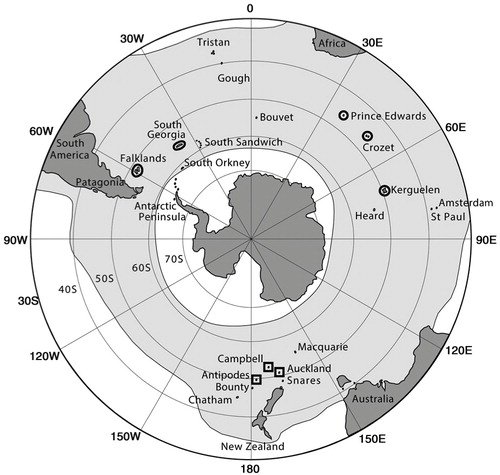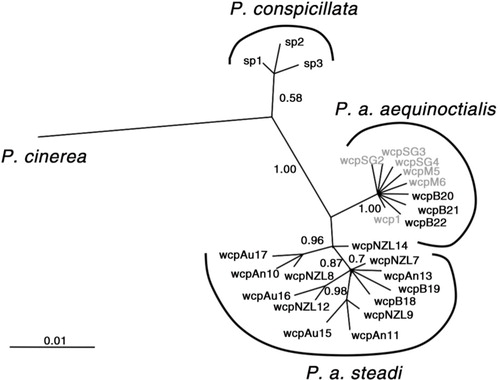Figures & data
Fig. 1 The main at-sea distribution and breeding locations of white-chinned petrels: Procellaria aequinoctialis aequinoctialis (circles) and P. a. steadi (squares).

Table 1 Population estimates for white-chinned petrel breeding colonies (Brooke Citation2004; Barbraud et al. Citation2008; ACAP Citation2009; Barbraud et al. Citation2009; Martin et al. Citation2009; Ryan et al. Citation2012; BirdLife International 2016) and the number from each population used in this study. Numbers in parentheses are adult birds caught off breeding islands during the breeding season. See Techow et al. (Citation2009) for additional details.
Fig. 2 Unrooted haplotype tree constructed using Bayesian Inference haplotypes for the two subspecies of white-chinned petrels in relation to spectacled (Procellaria conspicillata, sp1-3) and grey petrel (P. cinerea), adapted from Techow et al. (Citation2009). Probability values are given indicating support for the topology. Haplotypes found in bycatch are represented in boldface; wcpB18-19 from the New Zealand long-line fishery and wcpB20-22 from South Africa.

